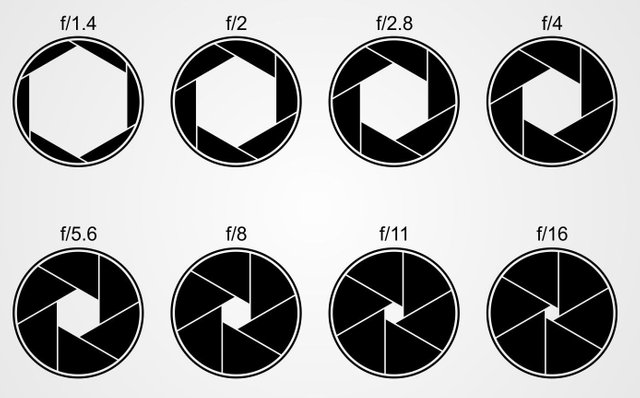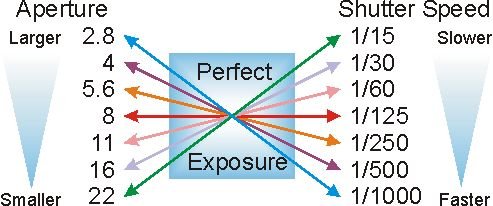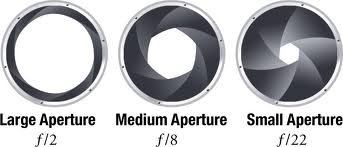Aperture - Digital photography
What is f-stop/aperture?

The lens opening (aperture) is a “ hole” in the lens- a diaphragm which is set bigger or smaller to control the amount of light falling on the sensor. The aperture is measured in the f-stop scale. The numbers of this scale can be very confusing. The best way to learn this, is to think of these numbers as fractions of a number:
For example: f/4 is two times bigger than f/8 and f/8 is two times bigger than f/16 etc.
An example of a lens that is opened up and the diaphragm is shown that controls the light. In other word, the higher the f-number, the smaller the aperture (lens opening) will be.

Big (a lot of light enters) f/1.4 f/1.6 f/1.8 f/2.0
It is important that a camera consists of a shutter and aperture because the f/stop controls the field of depth. A small aperture (f/16 etc.) will indicate a lot of field of depth. This type of aperture will be used when taking photos of landscapes because the photographer wants the whole image to be in view and sharp. A larger aperture (f/4.5) will show fewer fields of depth and this type of aperture will be used in portraits so that the model will stand out against the background.
The relationship between the shutter speed and aperture

The relationship between the shutter speed and the f/stop is direct. The situation dictates the combination between the shutter speed and the f/stop. If a speed of 1/15 second is needed and an opening of f/22, the opening will become bigger as the speed increases.
For example:
1/30 -second f/16 (Small object is in focus/more depth of field)
1/125-second f/8 (Bigger object is less in focus/ fewer depth of field)
In other words:
Small aperture = slower shutter speed (otherwise the photo will be underexposed)

Bigger aperture = faster shutter speed (otherwise the photo will be overexposed)

